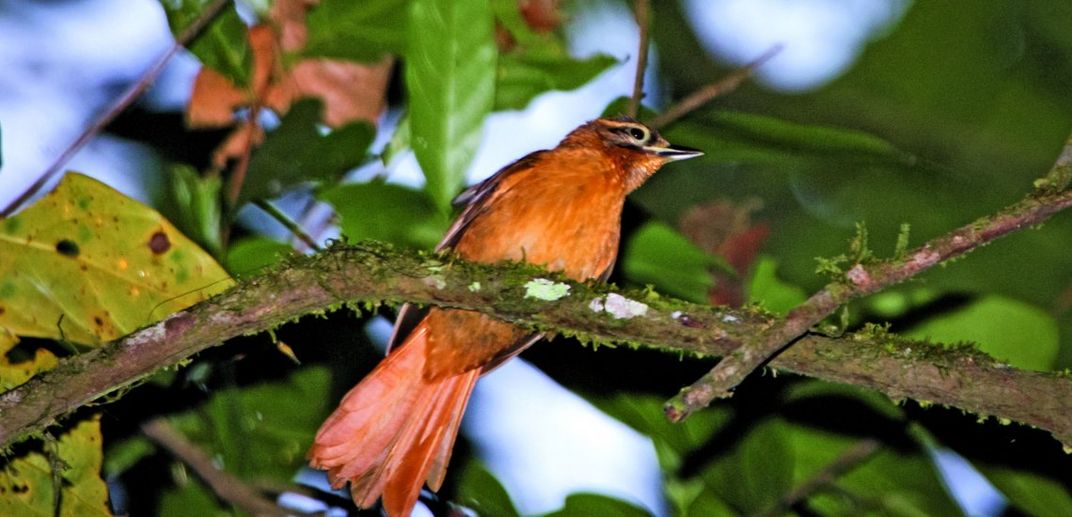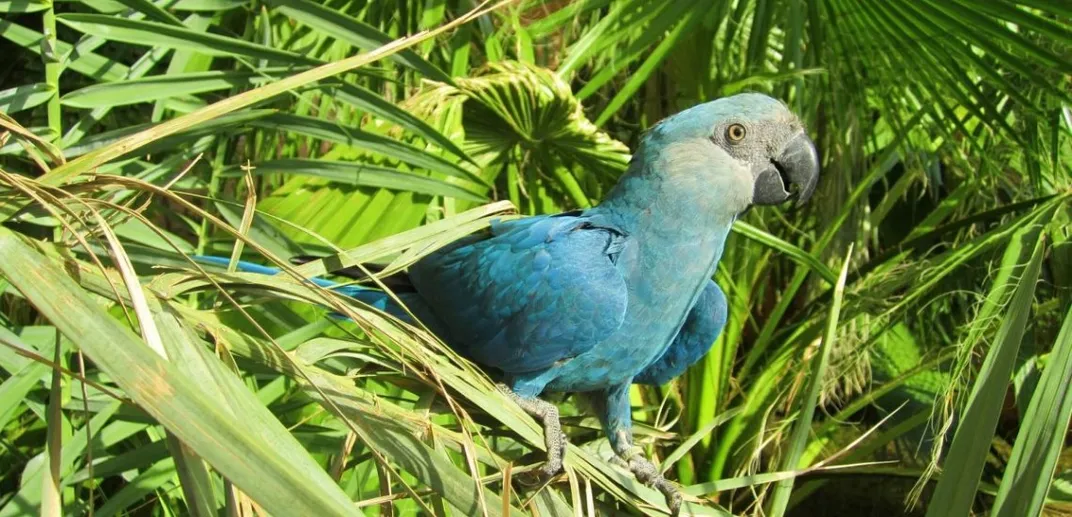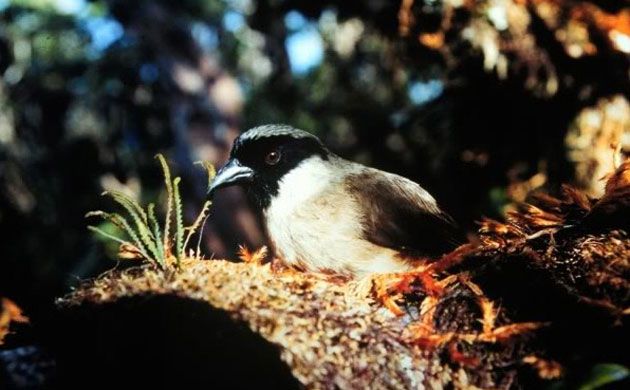In the Last Decade, Four Birds Went Extinct and Four More Are Likely Gone
Habitat loss is the main culprit in killing off the birds, including Spix’s macaw, the star of the popular 2011 film Rio
Any bird watcher can tell you—finding a rare species is maddening, with the birds popping up at unexpected times then hiding again for days, months and sometimes even years. It’s the same with endangered birds. It’s hard to say if a species has truly gone extinct or if they're are just being coy; there are stories every year about birds once believed to be extinct that suddenly reappear. But Patrick Barkham at The Guardian reports that a new study put together by BirdLife International says its time to erect tombstones for four bird species that have disappeared from the wild over the last decade and to get the casket ready for four more that are almost certainly gone.
Historically, 90 percent of the estimated 187 species of birds that we know have gone extinct lived almost exclusively on small islands where they had no place to flee from invasive species or habitat loss. Other, well, meatier species, like the dodo and the great auk were hunted as food by sailors, and some, considered agricultural pests, were exterminated on purpose. But the latest extinctions highlight a concerning trend. Some are taking place on large continents, in particular South America, that once insulated the animals from human impact. But no longer.
“People think of extinctions and think of the dodo but our analysis shows that extinctions are continuing and accelerating today,” BirdLife chief scientist Stuart Butchart, lead author of the study published in the journal Biological Conservation, tells Barkham. “Our evidence shows there is a growing wave of extinctions washing over the continent driven by habitat loss from unsustainable agriculture, drainage and logging.”
The study statistically analyzed sightings and habitat loss of 51 critically endangered bird species not seen for 10 years or who’ve faced existential threats in that time. Over the course of eight years, the authors examined 819 records and 356 surveys of the birds and consulted with experts to come to their conclusions. They found that three species were extinct, one was extinct in the wild and four are on the verge of extinction if they are not already gone.
The most well-known species on that list of eight is the Spix’s macaw, Cyanopsitta spixii, the baby-blue Brazilian parrot species whose plight was the plot of the 2011 movie Rio. A Spix’s macaw was believed to have been spotted in the wild in 2016, though that was likely an escaped captive bird; before that, the last known sighting of the bird in the wild came in 2000. As Sarah Gibbens at National Geographic reports, up to 70 of the birds may still live in captivity, meaning there’s a chance they could one day return to the wild. Still, as Nadia Drake points out for a separate article for National Geographic, the “remaining Spix's macaws are cloistered in captive breeding programs and refuges throughout the world...[and] the small population is vulnerable to genetic defects caused by inbreeding.”
Neverthless, that’s better odds than the Brazilian cryptic treehunter, Cichlocolaptes mazarbarnetti. The species, which was last recorded in 2007 before its last known habitat was logged, was also classified as extinct by the team. As was the Brazilian alagoas foliage-gleaner, Philydor novaesi, whose last stand in 2011 was turned into sugar-cane plantations, and the Poʻouli, a.k.a. Hawaiian black-faced honeycreeper, Melamprosops phaeosoma, last seen in 2004.
The team also recommends that South America’s glaucous macaw, Anodorhynchus glaucus, Brazil’s Pernambuco pygmy owl, Glaucidium mooreorum, as well as the Javan lapwing, Vanellus macropterus, and the New Caledonian lorikeet, Charmosyna diadema, be listed as “possibly extinct.”
Knowing whether a species is extinct isn’t just an academic exercise. In an era where conservation dollars are short and the threats to habitats are growing, conservationists need to know when to move on. “We’ve got limited conservation resources so we need to spend these wisely and effectively. If some of these species have gone we need to redirect these resources to those that remain,” Butchart tells The Guardian’s Barkham. “Obviously it’s too late to help some of these iconic species but because we know birds better than any other taxonomic class we know which other species are most at risk. We hope this study will inspire a redoubling of efforts to prevent other extinctions.”
Conservationists have plenty of targets to choose from. Helen Mann at CBC Radios’ As It Happens reports that the International Union for Conservation of Nature Red List, the international endangered species list, identifies 1,200 of the roughly 10,000 bird species on Earth (20,000 if you believe a recent study) as threatened with extinction and another 800 as near-threatened. And while finding a once-extinct bird in the wild is always exciting, it’s not really a reliable conservation strategy.


